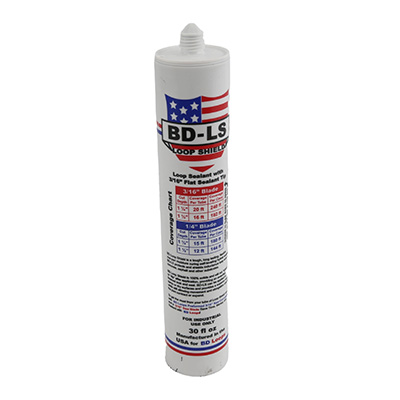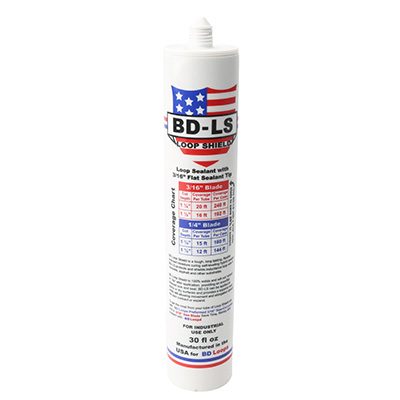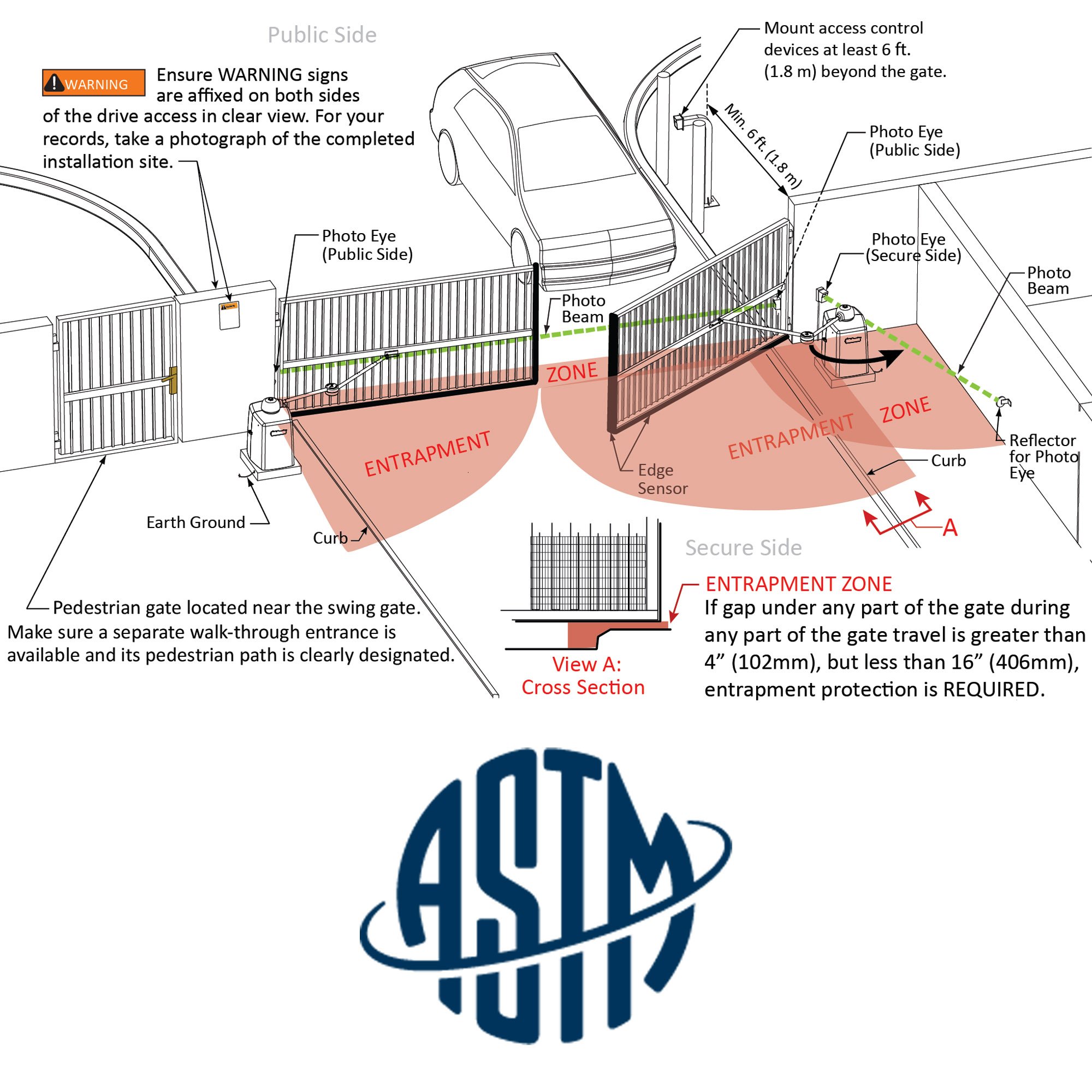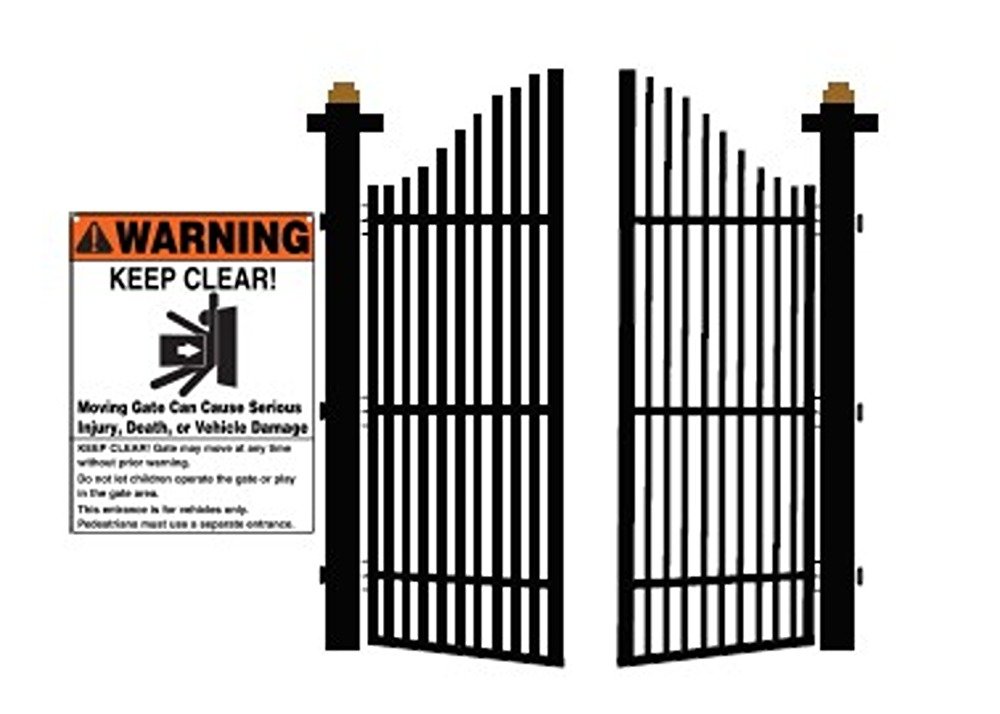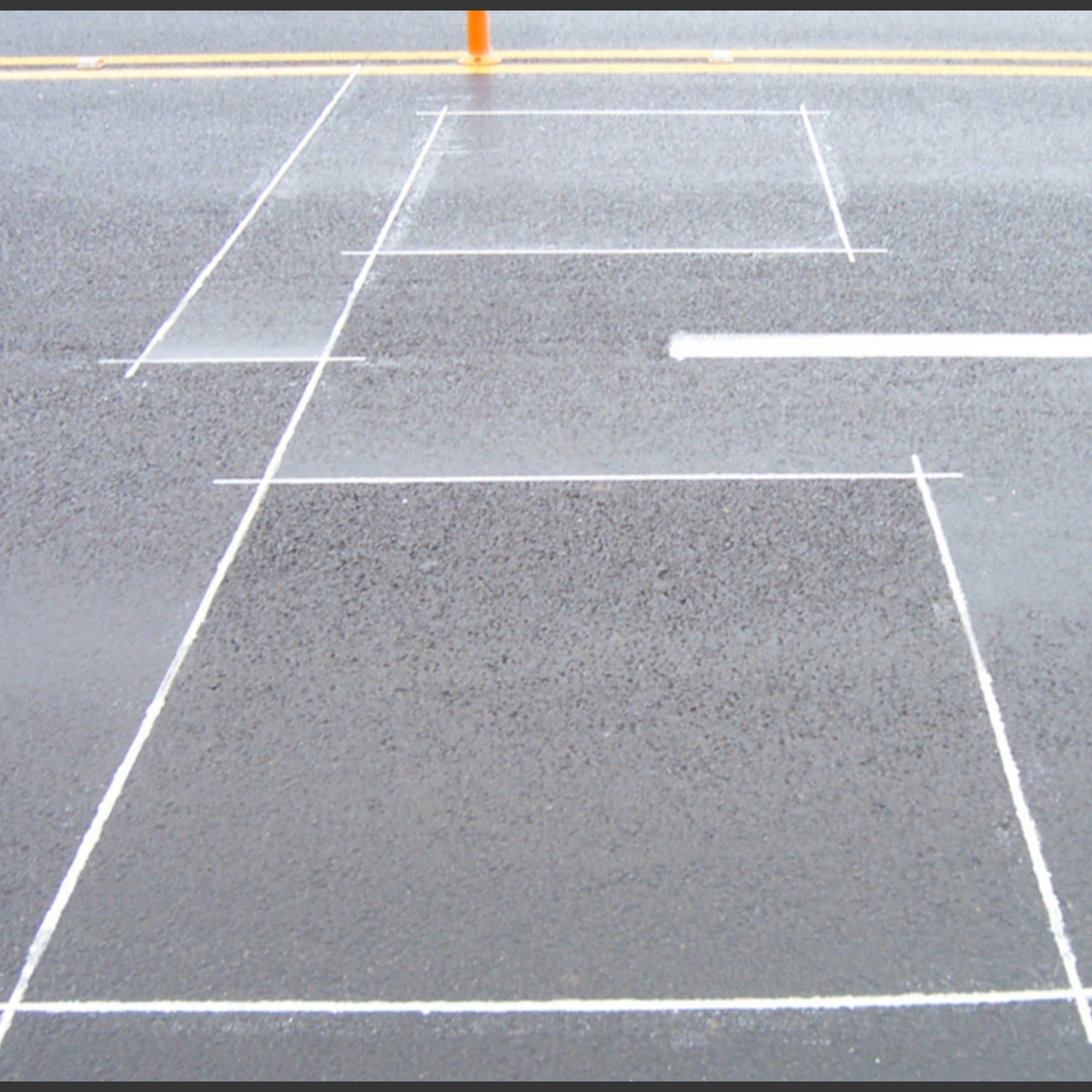Vehicle Loop Finder: Gate Diagrams + Sealant & Sand Calculators

BD Loops are specialized preformed inductance loops designed to detect the presence of vehicles in automated access systems. Installed beneath a driveway, roadway, or entry point surface, these loops signal gate operators or overhead door systems when a vehicle passes over or stops above them. The loop then triggers an action, such as opening, holding open, or reversing a gate or door, making them a crucial component of safe and efficient traffic control. BD Loops are known for their durability, ease of installation, and consistent performance in various environments. Whether securing a residential driveway or managing access at a commercial facility, BD Loops ensures vehicles are detected accurately and reliably.
Below is all the essential information you need to purchase and install a vehicle loop to ensure your gate opener system's smooth and safe operation. From installation types & applications to specific product recommendations and example installation guides to sealants and accessories.
PLEASE NOTE: BD Loops provides loop layout diagrams to promote understanding of proper loop installations. While they strive for accuracy, the information may not account for all variables, and users should consider unique site conditions. The diagrams are for informational purposes, not specific safety or installation guidance. The installer and owner are responsible for ensuring proper design, implementation, and maintenance.
BD Loops does not guarantee that the diagrams will meet vehicle detection needs in every case. They make no warranties regarding their products or diagrams and are not liable for misuse, modifications, or damages caused by third-party installations. Users assume all risks, including personal injury, related to the use of BD Loops' products and materials.
Loop Finder: Select Your Gate Type to Find the Perfect Loop
Installation Types
Direct Burial Application
Direct burial loops are best suited for installations where the loop will be placed beneath a new surface. This includes fresh concrete pours, gravel or dirt roads, under pavers, or beneath new asphalt layers. These loops are placed before the final surface is poured or installed, making them ideal for new construction or major resurfacing. Do not use this method if you're installing loops on existing pavement - use the Saw-Cut Application instead.
- Use for new surfaces like poured concrete or asphalt.
- Not for existing roads - see Saw-Cut Application instead.
- Ideal for projects before surface materials are applied.
Saw-Cut Application
Saw-cut loops are designed for existing concrete or asphalt surfaces. The loop wire is installed by cutting a groove into the surface, inserting the loop, and sealing it with a loop sealant. This method is most common for retrofits or upgrades, where the surface is already in place and cannot be disturbed.
- Use for existing surfaces like finished roads or driveways.
- Loops are cut into the surface and sealed in place.
- Don't use if you're laying a new surface - go with Direct Burial.
Important Notes Regarding Loop Layouts By Installation Setting
Slide Gates
Slide gates need a minimum of two loops: an inside reverse loop (or exit loop) and an outside reverse loop. These loops ensure the gate stays open or reopens if a vehicle is in the path. If desired, the inside reverse loop can be connected to the exit loop function. The exit loop also opens the gate automatically when a vehicle drives over it. For driveways with a long approach, adding an extra exit loop farther away improves user experience by opening the gate sooner.
Key Notes:
- Minimum 2 loops: inside + outside reverse or exit loops.
- Exit loop adds automatic gate opening when approached.
- Add extra exit loop on long driveways for faster response.
Swing Gates
Swing gates require a minimum of three loops: an inside reverse loop (or exit loop), a shadow loop, and an outside reverse loop. Reverse loops hold or reopen the gate if a vehicle is detected. The shadow loop checks for vehicles before the gate starts moving - but becomes inactive during motion, which is why the other loops are critical. As with other gate types, an extra exit loop on long approaches helps reduce wait times.
Key Notes:
- Minimum 3 loops: inside reverse/exit, shadow, and outside reverse.
- Shadow loop only works when the gate is not in motion.
- Add an extra exit loop on long driveways for convenience.
Overhead Doors
Overhead doors also require two loops: an inside reverse loop (or exit loop) and an outside reverse loop. These loops prevent the door from closing if a vehicle is in the path and can reopen it if necessary. The exit loop can also trigger the door to open automatically. Keep loops at least 4 feet apart for sites with multiple doors to prevent interference. Adding an exit loop on long approaches opens doors before vehicles arrive.
Key Notes:
- Minimum 2 loops: inside + outside reverse or exit loops.
- Exit loop adds automatic opening functionality.
- Maintain 4 feet between loops when installing near multiple doors.
- Add extra exit loop for faster access on long driveways.
Vertical Pivot Gates
Vertical pivot gates require at least two loops: an inside reverse loop (or exit loop) and an outside reverse loop. These loops perform the same function as other gate types - holding the gate open or reversing it if a vehicle enters the detection zone. If desired, the inside reverse loop can double as an exit loop. Adding an extra exit loop provides a smoother exit experience for properties with long approaches.
Key Notes:
- Minimum 2 loops: inside + outside reverse or exit loops.
- Inside reverse can be used as an exit loop.
- Install extra exit loop on long driveways to reduce wait time.
Vehicle Loop Installation Sealants & Calculator
Installing vehicle detection loops isn't just about proper placement; it's also about protecting your installation for the long haul. The right sealant ensures your loop wires stay secure, insulated, and free from moisture or debris. Equally important are the accessories that make installation, testing, and maintenance easier and more reliable. Below is a breakdown of our most trusted loop sealants and must-have tools. Whether sealing a loop in extreme weather or troubleshooting a system in the field, these products help ensure your installation is smooth, professional, and built to last.
BD Vehicle Loop Sealant
The BD Loop Shield Caulk Sealant and BD-LG2 are professional-grade sealants designed to protect loop wire installations in various conditions. The Shield Caulk Sealant features a self-leveling, UV- and weather-resistant polymer formula that adheres to surfaces like concrete, asphalt, and brick and can even be applied to damp areas. It comes in a 30oz tube with applicator tips and is made in the USA from 100% solid materials that won't shrink. The BD-LG2 is a two-component polyurethane sealant formulated for cold-weather use, maintaining flexibility and strength in low temperatures while bonding to metal, plastic, and rubber for a durable, airtight seal.
How Much Loop Sealant Do You Need?
To determine how many tubes of sealant you need, you'll need to know:
- Groove Width (in inches)
- Groove Depth (in inches)
- Loop Perimeter (in feet)
- Lead-in Length (in feet)
- Sealant Volume per Tube
Sealant Tubes = (Total Groove Length in Feet x 12) x (Groove Width in Inches x Groove Depth in Inches) / Sealant Tube Volume (in3)
Let's do some quick conversions to help get everything in the correct units first:
- Loop Perimeter + Lead-In Length = Total Groove Length
- Total Groove Length x 12 (to convert into inches)
- Groove Width x Groove Depth x Groove Length = Groove Volume
Great! Now let's consider sealant volume:
Sealant Volume Per Tube (Approximate):
BD-LS (30oz Caulk Tube): 30 fl. oz. x 1.805 = 54.15 cubic inches
BD-LG2 (Dual Cartridge Tube): 22 fl. oz. x 1.805 = 39.71 cubic inches
So now we have simplified the formula to:
Sealant Tubes = Groove Volume / Sealant Tube Volume.
Follow along with the example calculation:
Example Calculation:
Let's say you're installing a 20 ft loop with a 50 ft lead-in:
- Groove Width: 0.25" (1/4")
- Groove Depth: 1.5"
- Loop Perimeter: 30 ft
- Lead-in Length: 20 ft
- You want to use BD-LS (30oz Caulk Tube): 54.15 cubic inches of sealant
- Total Groove Length = Loop Perimeter + Lead-In Length
30 ft + 20 ft = 50 ft - Total Groove Length in Inches = Total Groove Length x 12
50 ft x 12 in = 600 in - Groove Volume = Groove Width x Groove Depth x Groove Length
.25" x 1.5" x 600" = 225" cubed cubic inches - Number of Tubes Needed = Groove Volume / Sealant Tube Volume
225" cubed cubic inches / 54.15 cubic inches = 4.16 tubes of sealant - Round 4.16 to 5 and purchase an extra to account for what does not make it out of the tube and spillage. = 6 total tubes of sealant
Replace any of these variables with your project requirements/needs to calculate the number of tubes of sealant you will need for a proper and secure installation.
How Much Sand Do You Need for Direct Burial Loops?
Dry sand fully surrounds and protects direct burial loops inside the trench. To determine how many bags of sand you'll need, gather the following info:
- Loop Perimeter (in feet)
- Lead-in Length (in feet)
- Trench Width (in inches)
- Trench Depth (in inches)
- Volume per Bag of Sand (in cubic feet)
Sand Volume (cubic feet) = ((Loop Perimeter + Lead-In Length) x 12) x (Trench Width x Trench Depth) / 1728
We calculate the trench volume in cubic inches, then convert it to cubic feet (since one cubic foot = 1728 cubic inches). Once you know the total volume, divide by the volume each sandbag covers to get the total number of bags required.
Standard Sand Coverage: 1 bag of 50 lb dry sand = about 0.5 cubic feet.
So, the simplified formula becomes:
Total Sand Bags = Trench Volume (cubic feet) / 0.5
Follow along with the example calculation:
Example Calculation:
Let's say you're installing a 6' x 8' loop with a 20 ft lead-in:
- Loop Perimeter: 6 + 6 + 8 + 8 = 28 ft
- Lead-in Length: 20 ft
- Trench Width: 2"
- Trench Depth: 3"
- Each sandbag covers 0.5 cubic feet
- Total Groove Length = Loop Perimeter + Lead-In Length
28 ft + 20 ft = 48 ft - Total Groove Length in Inches = Total Groove Length x 12
48 ft x 12 = 576 in - Trench Volume in Cubic Inches = Total Groove Length x Trench Width x Trench Depth
576 x 2 x 3 = 3456 cubic inches - Convert to Cubic Feet = Trench Volume (inches) / 1728
3456 / 1728 = 2 cubic feet - Number of Sand Bags = Trench Volume (cubic feet) / .5
2 / 0.5 = 4 bags - Round up and add 1 extra bag for safety/spillage = 5 total bags of sand
Adjust the variables above to match your project dimensions and determine how many bags of sand you'll need for a proper direct burial loop installation.
BD Vehicle Loop Accessories
Loop Sealant Dispensing Gun
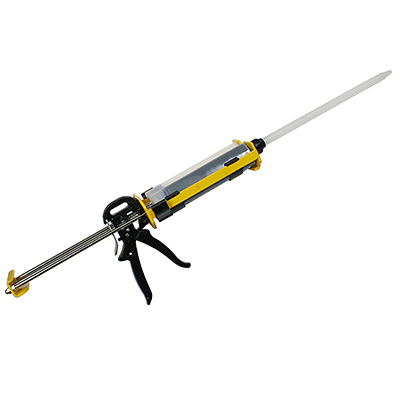
This professional-grade dispensing gun is specially designed for use with dual-cartridge, two-component sealants like the BD-LG2 Winter-Grade Sealant. Its dripless design ensures a clean application with no mess or waste, making it ideal for professional installers and DIYers. The gun features ergonomic grips for comfort and precise control, allowing smooth and consistent sealant flow. This tool is a must-have for reliable and efficient application if you're working with two-part sealants in challenging environments.
Shop NowE-Z Detector Checker
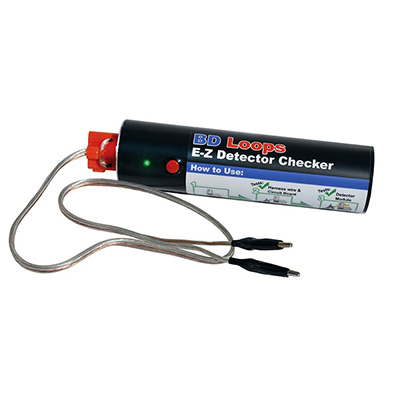
The E-Z Detector Checker is a compact, handheld tool that simplifies troubleshooting vehicle loop detection systems. Acting as a fully functional test loop allows technicians to quickly identify issues in the detector, wiring, or loop circuit by simulating real-world conditions. An LED light confirms if the loop is energized, and a simple button press simulates vehicle detection to verify detector and operator response. Housed in a durable PVC shell and powered directly by the gate operator, it requires no batteries. It significantly reduces the time and guesswork of servicing loops, helping avoid unnecessary loop cuts and repeat service calls.
Shop NowWater-Tight Splice Kit
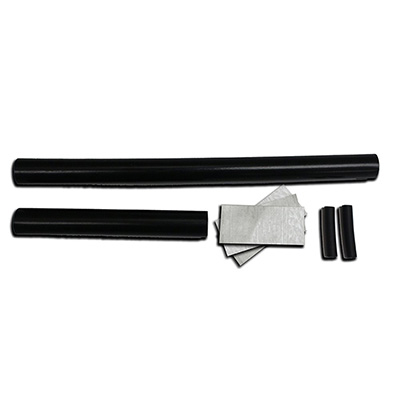
When splicing loop wires is necessary, the BD Loops Water-Tight Splice Kit provides a reliable solution for creating moisture-resistant, corrosion-proof connections. The kit includes double-walled, adhesive-lined shrink tubing and glue tape to create a layered, watertight seal. It's designed for preformed loops, 16 AWG, or thicker wires and is ideal for repairs and extensions. Proper splicing prevents signal interference and protects against long-term damage from water exposure. Tools like a soldering iron and heat gun are required for best results.
Shop NowBD Loops offers a full suite of products to make your vehicle detection installations more efficient, durable, and reliable. From expertly engineered preformed loops to high-quality sealants and essential accessories, every component is built with performance and installer convenience. Whether you're working in harsh weather, on varied surfaces, or need to ensure long-term protection for your loop system, BD Loops provides the trusted solutions professionals rely on.
If you have any questions about loop selection, sealant quantities, or installation best practices, please don't hesitate to reach out. We're here to help you get the job done right.
Contact Us

